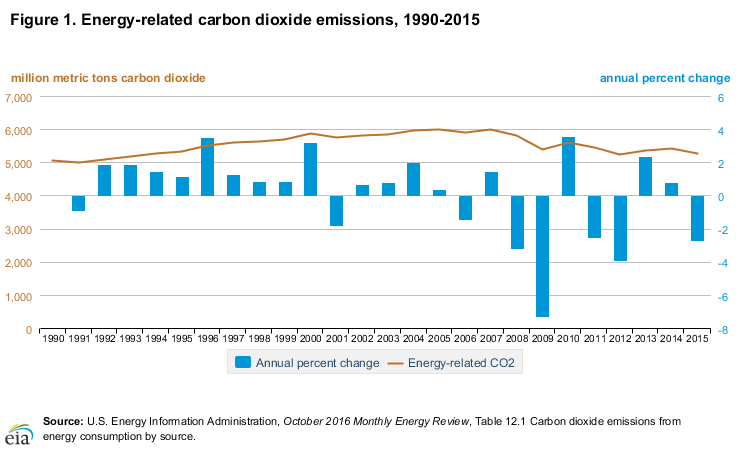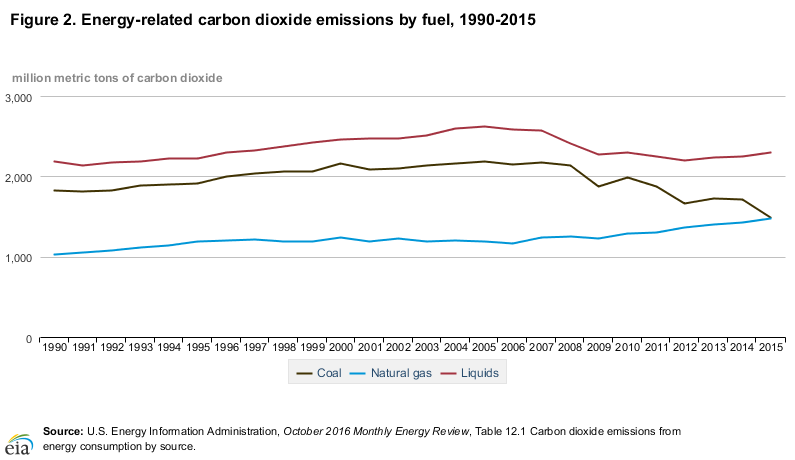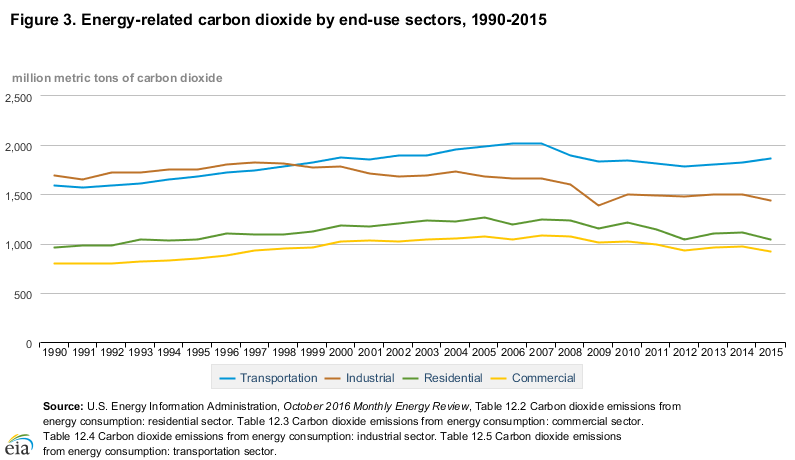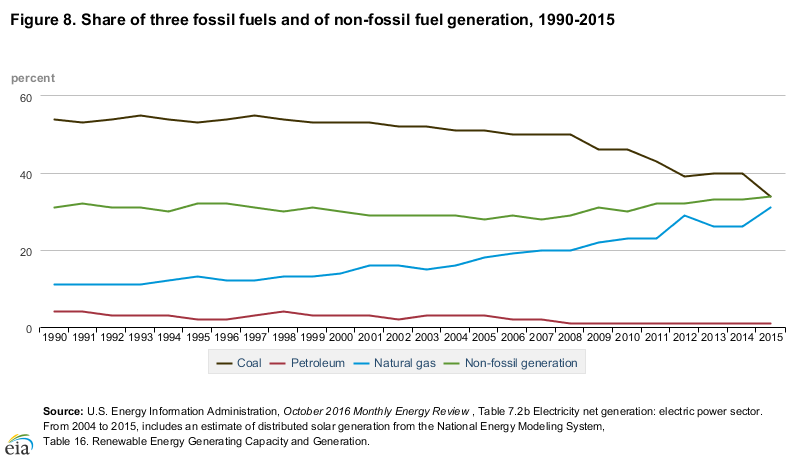Low energy prices, economic growth, and weather patterns are driving CO2 output
By: Ellis Talton
In March 2017, the EIA released a report showing in the last several years there has been a decline in “energy-related” carbon dioxide emissions in the United States, but the report reveals it expects an increase in CO2 output in 2018. Much attention has been put on curbing coal in order to bring down CO2 emissions, but this report reveals that lower energy prices and economic growth drive motor fuels, diesel fuels, and jet fuels to become much more significant contributors to carbon dioxide (CO2) output.

In total, the EIA report shows that overall CO2 output fell by 2.7 percent in 2015. That is certainly promising, and is largely a result of natural gas replacing coal in electricity generation. Petroleum liquids accounted for 2,294 million tonnes of CO2 in 2015 with coal number two; it accounted for nearly half as less at 1,482 million tonnes of CO2 in 2015. Also, due to the increase of natural gas usage in electricity generation, gas is nearing coal in terms of CO2 output and in 2015 accounted for 1,471 million tonnes of CO2 output. This is the highest output of CO2 ever for natural gas, but natural gas is cleaner than coal and “produces more energy for the same amount of emissions as coal”, according to the report.

When looking at ways of bringing down CO2 emissions, proponents, policymakers, and thought leaders should show a considerable effort to the transportation sector in the United States. While the Commercial and Industrial sectors naturally attract attention as pollutants in the economy, activity on the roads actually accounts for most of the CO2 output in the United States. This is partly a result of prices at the pump falling 28% from 2014 to 2015. This resulted in the transportation sector (motor fuel, diesel fuel, and jet fuel) accounting for 35% of all energy-related CO2 output, followed by the industrial sector (27%), residential (19%), and finally the commercial sector (17%).

Another revelation in the report shows that 2015 was the first time ever that non-fossil fuels, which include renewables and nuclear, reached parity in the energy fuel mix for electricity generation. In 2015, 34% of electricity generated came from coal and 34% from renewables and nuclear. This is a dramatic change from 2007, for example, when 50% of all electricity was generated through coal.

These changes in CO2 output and energy intensity are largely dictated by weather patterns, GDP growth, and energy prices. While this report shows there have been positive steps to reduce carbon emissions over the last 10 years, the EIA predicts that 2017 and 2018 will see a 1.6% increase in CO2 output.
 Ellis Talton is a New York Energy Week 2017 Fellow. He worked as an energy journalist for The Oil & Gas Year in Istanbul, Turkey and covered the Middle East and Africa. He graduated from The University of the South: Sewanee with a Bachelor’s of Arts in French Studies and a focus on international relations.
Ellis Talton is a New York Energy Week 2017 Fellow. He worked as an energy journalist for The Oil & Gas Year in Istanbul, Turkey and covered the Middle East and Africa. He graduated from The University of the South: Sewanee with a Bachelor’s of Arts in French Studies and a focus on international relations.

